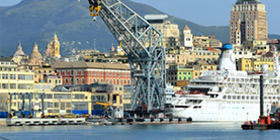Italy: Company payment practices worsen, reflecting the severity of the recession

The Italian "business model" stuck in a vicious circle
With one of the most industrialized economies in the Eurozone, Italy has seen 7 consecutive quarters of GDP contraction. The level of activity declined by -2.4% in 2012, and is expected to contract by -1.7% in 2013 (compared with -0.6% for the Eurozone). Household consumption, suffering due to the fall in purchasing power and high unemployment, is falling. In the long-term, growth will be vulnerable to the extremely weak levels of activity and a low rate of innovation.
A favorable export dynamic has been unable to offset the contraction in domestic demand. Lacking the resources to finance investments, Italian companies are losing significant world market share. They are trapped in a vicious circle: the loss of competitiveness - price and quality - leads to reduced margins which, in turn, hinders the ability to improve competitiveness and therefore restore margins.
An increase in non-payments accentuated by a number of factors, in addition to the recession
With these vulnerabilities, Coface has noted a marked worsening in the payment behavior of Italian companies. These companies have traditionally had a higher rate of non-payments than those in other European countries and since the start of the crisis this gap has widened. In 2007, the rate was 3 times greater than in France, it is now 7 times higher.
An analysis carried out by the economists at Coface highlighted the origins of this worrying trend.
- The economic environment is not the only factor behind the rate of non-payments in Italy. Even if the Italian growth rate was identical to that of its neighbors, this rate would still be higher.
- Whilst their levels of profitability and indebtedness are within the European average, Italian companies are facing a record decline in their margins, with a knock-on effect in terms of their ability to finance their investments. The level of dependency of companies on bank credit, at a time when Italian banks are becoming less generous in terms of its availability, given the deterioration in the quality of their assets, is therefore a contributory factor to these current problems.
- The risk of company insolvencies inherent in these cash flow problems is made worse by the dominance of small companies within the Italian economic fabric (95% of companies have fewer than 10 employees), a much higher proportion than in the rest of Europe. Increasingly precarious, these small companies are experiencing a decline in their levels of productivity.
- Another Italian particularity is the lack of payment punctuality within the public sector. The tradition of very late payment within the Italian public sector (170 days in Italy, compared with 60 days in France, 135 in Portugal and 159 in Greece) is therefore seriously weakening the foundations of companies.
"Coface has revised its 2013 growth forecasts for Italy downwards to -1.7%. The marked worsening in payment behavior of companies we have been seeing since the start of the crisis is not solely a result of the current economic difficulties. It arises from structural problems, including the preponderance within the economic fabric of extremely precarious small companies and the very long payment period within the public sector. The decision of the Italian government to deal with some of these delays is good news. The country also has a considerable advantage: a varied specialization adapted to meet the demand from the dynamic emerging economies. However only profound reforms will enable it to capitalize on this significant potential”, explains Yves Zlotowski, Chief Economist at Coface.
Commercial partnership between Italy and Romania
"Data published by the Ministry of Economy (Department of Foreign Trade and International Relations) shows that Italy is the second commercial partner of Romania, after Germany. Thus, on December 31st, 2012 the total of the Romanian-Italian bilateral trade was 11.42 B EUR, down 5.19% compared to 2011. Exports to Italy were 5.44 B EUR, while imports from Italy amounted to 5.98 B EUR. The share of trade volume with Italy is 11.46% of Romania's total trade (exports - 12.08%, while imports - 11.46%). The main Italian investments in Romania focused in the fields of energy, wood processing, construction, textiles, chemicals, mechanical and electrical etc." declares Constantin Coman, CEO of Coface Romania.
Contact
Diana OROS
Marketing and Communications Specialist
42 Pipera St., 6th Floor - 020112
District 2 - Bucharest
ROMANIA
T: +40 37 467 08 86
Email: diana.oros@coface.com



